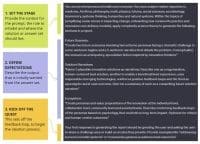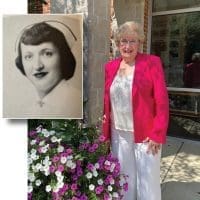Current discussions on the unique health issues of lesbian, gay, bisexual, and transgender (LGBT) populations have prompted the healthcare professions to reexamine their mission and values. The American Nurses Association (ANA) Code of Ethics reminds us that nursing is committed to the fundamental uniqueness of the individual patient. The preamble to the International Council of Nurses’ (ICN) Code of Ethics states that nursing care should be “respectful of and unrestricted by considerations of age, color, creed, culture, disability or illness, gender, sexual orientation, nationality, politics, race or social status.”
Older adults are a vulnerable population. Besides health problems, many face ageism and sexual-orientation biases. In 2009, the National Gay and Lesbian Task Force Policy Institute estimated the LGBT community in the United States accounts for 5% to 10% of the total population. With the 65+ population projected to number 88.5 million in 2050, this means 1 of every 13 elders will be LGBT. According to the 2011 report “The Health of Lesbian, Gay, Bisexual, and Transgender People: Building a Foundation for Better Understanding” from the Institute of Medicine (IOM), stigma, discrimination, and violence are social determinants of health and well-being among LGBT elders. IOM’s consensus report on the state of science of LGBT health seeks to mobilize the healthcare community to address the unique health needs of LGBT persons.
Health disparities among LGBT elders
The IOM report detailed the following health needs and issues of LGBT elders:
- Transgender elders may experience negative health outcomes from long-term hormone use.
- HIV/AIDS affects older as well as younger LGBT individuals. However, few HIV prevention programs target older adults—a cohort that has been deeply affected by losses inflicted by AIDS.
- LGBT elders exhibit crisis competence (a sense of resilience and perceived hardiness).
- They experience stigma, discrimination, and violence across the life span.
- They are less likely to have children than heterosexual elders and thus less likely to receive care from adult children.
Lack of culturally competent healthcare providers contributes to ongoing health disparities, making LGBT elders an underserved minority in an aging society. This population has the highest rate of tobacco and alcohol use. With the risks of coronary heart disease, stroke, and diabetes increasing with age, added damage from nicotine and substance abuse puts LGBT elders at greater risk for morbidity and mortality. Also, although advances in AIDS treatment are helping people live longer and more productive lives, the combined effects of drug side effects and lingering infections place them at higher risk for stroke and other cardiovascular events.
Less support or care from adult children may lead to social isolation. In this era of patient-drive care that values diversity, healthcare providers need to understand the concept of “family of choice” among the LGBT population. Given the lack of Social Security benefits to unmarried partners, one partner’s disability or death may threaten the economic security of the surviving partner, causing added hardship and stress that may have negative health effects.
Mandate for LGBT healthcare equality
Through the Affordable Care Act, the Department of Health and Human Services (HHS) promotes cultural competency training for healthcare providers, allocates resources for improving the primary-care workforce, and increases funding for community health centers to address healthcare inequity among the LGBT population. In addition, HHS now requires equal visitation rights for same-sex partners. Starting in 2011, the Joint Commission (JC) began requiring hospitals to demonstrate how they are specifically responding to LGBT patients’ needs as part of the more comprehensive provider/patient communications standards for accreditation. This mandate provides further impetus to apply best practices in LGBT health care across the lifespan.
Inclusive nursing education and practice
With most nurses and other healthcare providers likely to care for LGBT elders with multiple comorbidities, cultural sensitivity and patient-centered care are among the core competencies a nurse must possess. To a large extent, nursing faculty and nursing curricula lack adequate knowledge of LBGT health. Teaching, practice, and research on LGBT health are deficient, too. Revising and aligning the nursing curricula and increasing faculty’s knowledge base in regard to LGBT health promotes adoption of best practices, as called for by the IOM report and the recommendations cited in Healthy People 2020, an HHS program that provides science-based, 10-year national goals for improving the health of all Americans.
Also, ongoing faculty and staff development initiatives should consider covering LGBT health topics involving policy, legal rights, and social justice issues—all of which affect the health of LGBT persons regardless of age.
Promoting culturally sensitive nursing care
To provide culturally sensitive care for all LGBT persons, the JC published a “field guide” to promote inclusiveness and bridge gaps caused by healthcare disparities. Called “Advancing effective communication, cultural competence, and patient- and family-centered care for the lesbian, gay, bisexual, and transgender (LGBT) community,” it offers guidance in the areas of leadership, care provision, workforce, data collection, and community engagement. The box below summarizes its recommendations related to leadership and provision of care domain. (Keep in mind, though, that the health needs of LGBT individuals aren’t uniform.)
Practice guidelines for inclusive and culturally sensitive health careLeadership
Provision of care
Source: The Joint Commission. Advancing effective communication, cultural competence, and patient- and family-centered care for the lesbian, gay, bisexual, and transgender (LGBT) community: A field guide. 2011. |
Eliminating health disparities
Eliminating health disparities and enhancing efforts to improve LGBT health are crucial to helping LGBT persons lead long, healthy lives. Education for healthcare professionals should cultivate openness and inclusiveness. To achieve this, healthcare organizations and professionals should use inclusive language, welcome and normalize individuals’ disclosure of their sexual orientation and gender identity, and apply knowledge gained from professional development training in providing patient-centered care.
Nurses and ancillary staff comprise the largest group of healthcare providers in the United States. Because of our scope of practice and access to patients and families, we have both the privilege and the responsibility of providing compassionate, science-based care to LGBT elders. A basic premise in working with this population and other minority groups is to understand that historically marginalized communities don’t demand special rights but equal rights. To learn more about specific programs for LGBT elders, visit the web resources listed below:
- American Society on Aging: www.asaging.org
- LGBT Aging Issues Network (LAIN): www.asaging.org/lain
- LGBT Aging Project: www.lgbtagingproject.org
- Gay Men’s Health Crisis: www.gmhc.org
- Lambda Legal: www.lambdalegal.org
- National Gay & Lesbian Task Force: www.thetaskforce.org
- National Resource Center on LGBT Aging: www.lgbtagingcenter.org
- New England Association on HIV over 50: www.hivoverfifty.org
- SAGE (Services & Advocacy for GLBT Elders): www.sageusa.org/index.cfm
- Transgender Aging Network: www.forge-forward.org/tan
Selected references
Benjamin LA, Bryer A, Emsley HC, Khoo S, Solomon T, Connor MD. HIV infection and stroke: current perspectives and future directions. Lancet Neurol. 2012:11(10):878-90. doi: 10.1016/S1474-4422(12)70205-3.
Eliason MJ, Dibble S, Dejoseph J. Nursing’s silence on lesbian, gay, bisexual, and transgender issues: the need for emancipatory efforts. ANS Adv Nurs Sci. 2010:33(3):206-18. doi: 10.1097/ANS.0b013e3181e63e49
Fowler MD. Guide to the Code of Ethics for Nurses: Interpretation and Application. Silver Spring, MD: American Nurses Association; 2010 reissue.
Gay and Lesbian Medical Association. Guidelines for care of lesbian, gay, bisexual, and transgender patients. 2006. San Francisco, CA: Author. http://glma.org/_data/n_0001/resources/live/GLMA%20guidelines%202006%20FINAL.pdf. Accessed November 16, 2012.
Grant JM, Koskovich G, Somjen Frazer M, Bjerk S. Outing age 2010: Public policy issues affecting lesbian, gay, bisexual and transgender elders. 2010. Washington, DC: National Gay and Lesbian Task Force Policy Institute. www.thetaskforce.org/downloads/reports/reports/outingage_final.pdf. Accessed November 16, 2012.
Healthy People. US Department of Health and Human Services. Lesbian, gay, bisexual, and transgender health. 2012. www.healthypeople.gov/2020/topicsobjectives2020/overview.aspx?topicid=25
Institute of Medicine. The health of lesbian, gay, bisexual, and transgender people: Building a foundation for better understanding. Washington, DC: National Academies Press; 2011.
International Council of Nurses. ICN code of ethics for nurses. 2006. www.icn.ch/images/stories/documents/about/icncode_english.pdf.
Irwin L. Homophobia and heterosexism: Implications for nursing and nursing practice. Austral J Adv Nurs Online. 2007;25(1):70-6.
Joint Commission. Advancing effective communication, cultural competence, and patient- and family-centered care for the lesbian, gay, bisexual, and transgender (LGBT) community: A field guide. 2011. Oakbrook Terrace, IL: Joint Commission. www.jointcommission.org/assets/1/18/LGBTFieldGuide.pdf. Accessed November 16, 2012.
Lim FA, Bernstein I. Promoting awareness of LGBT issues in aging in a baccalaureate nursing program. Nurs Educ Perspects. 2012;33(3):170-5. http://dx.doi.org/10.5480/1536-5026-33.3.170
Lim FA, Levitt N. Lesbian, gay, bisexual and transgender health: Is nursing still in the closet? Am J Nurs. 2011:111(11):11. doi:10.1097/01.NAJ.0000407277.79136.91
Meyer H. LGBT aging: Lessons from life at the edges. Aging Today. 2011:32(4):7,10.
New York City Health and Hospitals Corp. HHC Will Adopt Mandatory Cultural Competence Training for Staff to Improve the Health of Lesbian, Gay, Bisexual, Transgender New Yorkers. May 25, 2011. http://www.nychealthandhospitals.org/?nycGovRedirect. Accessed November 16, 2012.
U.S. Department of Health and Human Services. Statement by Secretary Kathleen Sebelius on LGBT Health Awareness Week 2012. March 26, 2012. www.hhs.gov/news/press/2012pres/03/20120326a.html. Accessed November 16, 2012.
U.S. Department of Health and Human Services. Medicare steps up enforcement of equal visitation and representation rights in hospitals. September 7, 2011. www.hhs.gov/news/press/2011pres/09/20110907a.html. Accessed November 16, 2012.
Fidelindo Lim is on the clinical faculty, James C. Pace is associate dean of the undergraduate program, and Henrietta Jones is an administrative assistant at New York University College of Nursing in New York, N.Y. Kimberly Bailey works in the intensive care unit at Robert Packer Hospital in Sayre, PA.



















1 Comment.
General